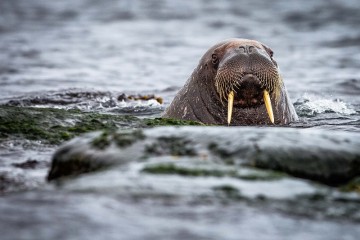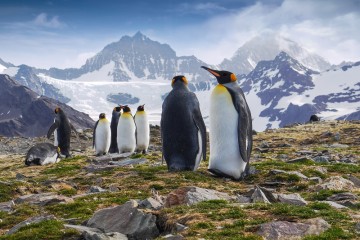Best Patagonia cruises, when to go, what to see, and what to pack for it!
Cruising in Patagonia isn’t just a blissfully enjoyable way to soak up the wonders of one of the world’s most remote and unspoilt regions but also offers you the chance to reach splendours you’d otherwise never get to see. The Patagonian southern coast is one of the least explored areas of all, a true wonderland of pristine wilderness, where fjords, hidden icy coves, magnificent glaciers and impressive penguin colonies thrive in a world all of their own. On a liveaboard expedition cruise in Patagonia, you can immerse yourself fully in this astonishing side of the region, one that’s been virtually untainted by man.
Click the links below to skip through the blog:
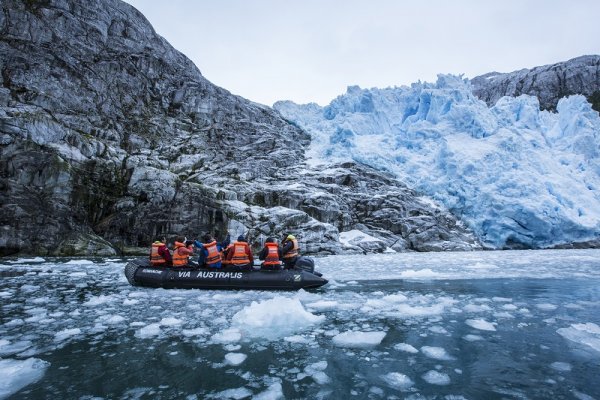
Zodiac tour to the glacier
Click HERE to see all Patagonia cruises
The cruising highlights of Patagonia start in Tierra del Fuego, the ‘archipelago at the end of the world’ that’s traversed by the Beagle Channel and defined by Cape Horne in the south and the spellbinding Chilean Fjords in the west. Your choice of cruising, this far south, is extensive: you can cruise around Cape Horn, sail along the Chilean Fjords or them both, back to back, for a South American cruise experience that’ll blow your mind. And mind you, this won’t be a ‘cocktail and palm-trees’ type cruise. Patagonia cruises are revered for being true-blue expeditions, with Zodiac excursions, kayaking and plenty of guided hiking excursions to resplendent glacial waterfalls and visits to renowned wildlife nesting sites.
The ultimate adventurous exploration ‘at the end of the world’?
You got that right.

Chilean Fjords
Click HERE to see all Patagonia cruises
When to go on a Patagonia Cruise?
Whilst Patagonia can certainly be considered a year-round destination (with amazing hiking on offer in summer and fantastic skiing in winter) Patagonia cruises only run between late September to early April, during the southern Summer months. As Winter encroaches on the small inlets most cruises want to navigate, it becomes almost impossible to cruise here, least of all for the fact that nesting penguins don’t arrive until early October, promptly leaving in late March to migrate north.

Big glacier in Patagonia
Click HERE to see all Patagonia cruises
Despite the fact that we can indeed call this ‘summer cruising’ you should never forget that the weather, in Patagonia, is always unpredictable. Even at the height of the Summer, you can easily have days registering just 5C on the thermometer, with most days hovering around 10C. You’ll no doubt enjoy glorious sunshine on most days, but should also expect sudden turns, strong winds, some rain and even some snow. To be honest, this can make for the most mesmerizing scenery of all, atmospheric and photogenic to the absolute max.

The southernmost tip of South America Cape Horn
Click HERE to see all Patagonia tours
Here’s a quick overview of the monthly highlights during the Patagonian cruising season:
Early Season (September – November)
Whales start their migration south towards Antarctica and if you can swing a Patagonia cruise in Peninsula Valdes in the north as well, you’ll see humongous colonies of sea lions and seals as well as impressive pods of whales. In Tierra del Fuego, Magellanic penguins arrive in earnest by early November, building their rookeries and awaiting their new furry arrivals. This is also prime mating season for the Wandering Albatross and the majestic Andean Condor.

Field full of Magellanic penguins in Patagonia
Click HERE to see all Patagonia cruises that include Tierra del Fuego
High Season (December – January)
It’s all on for young, old, feathery and flippery at the height of the Summer, at a time when you’ll see those adorable penguin chicks hatch. Long days of daylight makes for fantastic and extensive explorations, with longer outings, longer days and simply more time to soak up the delights of Patagonia cruising.

High season cruising in Patagonia
Click HERE to see all Patagonia cruises
Late Season (February – April)
February is considered the best whale-watching month of all in Patagonia and all those penguin chicks that hatched a few months ago? They’ll be older, bolder, infinitely more active and very curious.

Whale watching in Valdes Peninsula
Click HERE to see all Patagonia tours
For budget sake, it obviously figures that High Season cruising is more expensive than either Early or Late Season options. However, the most affordable option will always arise from early-bird specials. This is especially true if you wish to cruise on a smaller vessel (more on why you’ll want to do that later) as they tend to book up to 6 months (or even 12) in advance.

Cruising in the Glacier Alley in Patagonia
Click HERE to see all Patagonia cruises
Best cruises exploring Tierra del Fuego and the Cape Horn
Choosing small-ship cruising is a win-win in every which way you look at it. Not only will you reach remote nooks larger vessels can’t get to but you’ll also spend much less time getting on and off the boat at each excursion point, so you’ll get more time ashore. This is why we love cruising with Australis, of Stella Australis and Ventus Australis fame. Their vessels are sensational, world-class ice-strengthened powerhouses of adventure, crewed by experienced professionals and offering what we believe are the best value-for-money adventure cruises in Patagonia. Plus, they’ve been at this game for almost 30 years, with an impeccable record, boast a multitude of awards and an unparalleled reputation. When you cruise some of the most jaw-dropping but inhospitable waters in the world, that’s just the kind of hands you want to be in. Their commitment to sustainable cruising and their sheer passion and love for Patagonia is what makes their expeditions really stand out for the crowd. Love adventure and travelling in style in equal measure? Then these are the Patagonian cruises for you.

Beautiful view of Laguna Esmeralda in Tierra del Fuego
Click HERE to see all Patagonia cruises that include Cape Horn
Both Australis vessels have been carefully designed to maximise expedition enjoyment on Patagonia cruise, with all cabins boasting exterior windows (for that quiet moment of contemplative viewing) and an abundance of outdoor decking space that allows for unencumbered wildlife and landscape watching. Cabins are spacious, tastefully furnished and super comfortable and both ships boast fully-equipped gyms, should you ever find that Zodiac and on-land excursions just don’t get the blood pumping fast enough. Both the Stella and Ventus Australis boast 100 cabins and capacity for 200 guests.

Cruising onboard Stella Australis
Click HERE to learn more about Stella Australis
Stella Australis was the first baby of the Australis fleet, originally built in 2010, whilst Ventus is the new kid on the block, only launched in 2018. Aboard these grand Patagonia cruising dames, you’ll find Twin and Double Cabins of 16.5m2 and Superior Cabins of a stunning 20,5 m2. Comfort, elegance and luxury are at the forefront of Australis’ offerings, and we know you’ll find the dining rooms, cabins and halls to be sublimely suitable for the icy expedition of a lifetime.

Ventus Australis cruise ship in Patagonia
Click HERE to learn more about Ventus Australis
What's there to see on a Patagonia Cruise
Glaciers
Glacier Alley would have to rate as the most gobsmacking stretch of the Beagle Channel and is perhaps the section where Chilean Patagonia shines brightest. Argentina may well claim the most famous and unmissable glacier of them all (Perito Moreno) but Chile’s side is home to over three-quarters of all the glaciers of the Southern Patagonian Ice Field. And, guess what? Most of them can only ever be seen by expedition ship cruise. From the majestic Pio XI Glacier to the five most famous glaciers here, Holanda, Francia, Italia, Alemana and Espana (19th-century explorers were rather patriotic) Glacier Valley is one of the world’s most cherished natural treasures, a flowing avenue brimming with high waterfalls, blue and white icebergs and absolutely resplendent scenery. If you can only choose one highlight to include on your Patagonia cruise, our money’s on this one.

Top view of Perito Moreno glacier
Click HERE to see all Patagonia cruises
Wildlife
A South America cruise around Cape Horn offers the best chances for whale spotting, especially in February when numbers are at their highest, particularly of humpback whales. Yet no matter where you choose to cruise in Patagonia, be it Cape Horn or Tierra del Fuego, all the way up the Chilean Fjords, you’ll have great chances of spotting the region’s favourite residents, including Southern Elephant Seals, Magellanic Penguins, Cormorants, Black-Brown Albatross and Peale’s Dolphins, and even the more elusive Chilean Dolphin if you’re super lucky. Include a visit to Inútil Bay in Tierra del Fuego and you could feast your eyes on what is considered the only colony of King Penguins in the entire continent.

Spot wildlife in Tierra del Fuego
Click HERE to see all Patagonia cruises that include Tierra del Fuego
Cape Horn
When you hear of cruises ‘around Cape Horn’ you should probably understand that 99% of cruising routes don’t actually go AROUND the Cape but, rather, get as close to it as possible, usually sailing as far southeast as conditions allow and then turning back. That’s because the seas beyond the cape are considered the roughest in the world – this is the start of the infamous Drake Passage that leads to Antarctica, after all. Cape Horn is one of the most dramatic natural highlights in all of Patagonia, defined by a sheer rocky promontory that rises more than 400m above sea level, lapped by the Pacific on one side and the Atlantic on the other, the confluence at this latitude making for insanely treacherous cruising conditions. Thousands of seafarers lost their lives trying to simply round the cape and a memorial in the shape of an albatross was erected at the cape in their honour. Up until the early 1900s, before the Panama Canal was constructed in the north, this was the main trading route crossing the American continent. Today, a sail round Cape Horn is still considered the most coveted bucket-list in the yachting world.

Sail by Cape Horn and reach the southernmost tip of South America
Click HERE to see all Patagonia cruises that include Cape Horn
Wilderness
Everything about the landscape in the south of Patagonia is bigger, more dramatic and more breathtaking than almost anywhere else in South America. This is nature at its most unrestrained, where sky-reaching snow-capped peaks, vertiginous rocky cliffs, mind-boggling ice fields and outstanding channels offer a stunning sensory overload. The Patagonian wilderness is, to be honest, totally humbling. This is the kind of nature that makes one feel small and insignificant, certainly vulnerable and totally incapable of survival. You know, without a luxury cruise ship as salvation! There are very few places on our planet that can have this kind of awe-inspiring effect on the soul and although the singular glacier, iceberg or wildlife sighting is magical on its own, it’s the overall wilderness experience that is soul-stirring. Most of all, because there’s just so little hint of human existence here and that, perhaps, makes for the most unforgettable aspect of Patagonia cruises.

Cruising at Argentino Lake in Glacier Alley
Click HERE to see all Patagonia tours
What to Pack for a Patagonia Cruise
All of the above may have you shivering in your fluffy slippers already but listen, don’t panic, because we’ll have you packing like a Patagonia cruising pro in no time flat. You might find it surprising to know that packing for a Tierra del Fuego Cruise or a sail to Cape Horn is not all that different to packing for a cruise to Antarctica and that’s because the temperatures and conditions are only marginally better on this side of Drake Passage.

Cruising in Ushuaya, Argentinian Patagonia
Click HERE to see all Patagonia cruises
Our Antarctica Travel Packing Guide will go a long way in helping you sort out all the essential items although do note that Patagonia cruises are usually shorter in duration and may even include stopovers in cities along the way, so the lack of ‘extreme, long-term remoteness’ makes packing for Patagonia cruising a lot easier.
Nevertheless, 0C and bitterly cold winds are torturous no matter where you are and even if you must suffer for just a single day, that’s probably single day too many.
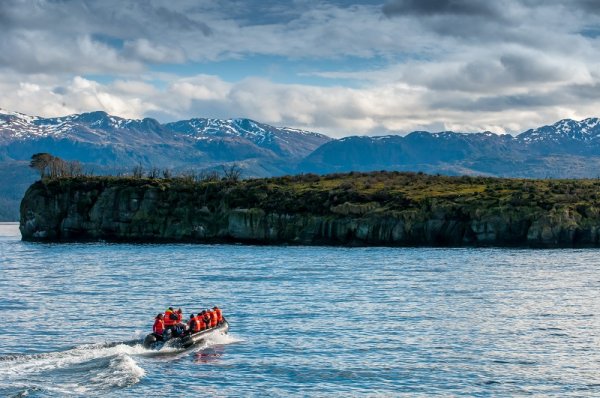
Zodiac tour in Patagonia
Click HERE to see all Patagonia cruises
Imagine winter at home, with much stronger winds – Daytime temps in Patagonia hover between 5 and 15C, the latter being quite balmy at home, right? Not here. Cold southern winds can easily make it feel like -15C so windproof and waterproof outerwear is about the most important item you’ll need. You’ll want to protect your extremities from the wind and water spray, which means your jacket will need to have a hoodie you can tie up, worn over a woollen beanie and woollen scarf, along with thin woollen gloves, with a pair of waterproof gloves over the top.
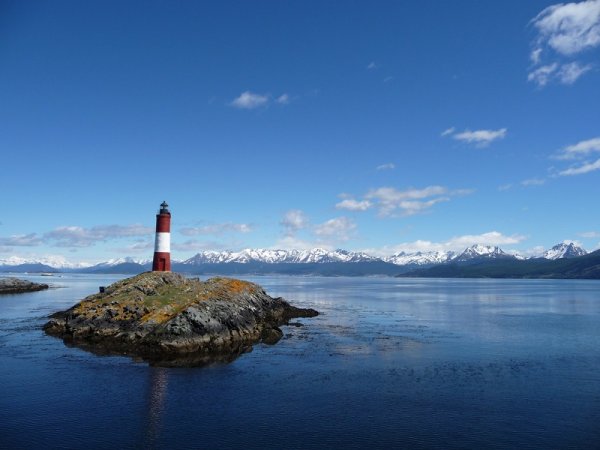
The light tower in Patagonia
Click HERE to see all Patagonia tours
In Patagonia, you could be hiking in a T-shirt of the morning and be wrapped up like an Egyptian mummy by early afternoon (yes, that’s how crazy it can get!) so just be prepared for all eventualities, for the duration of your Patagonia cruise. The bottom of the above-linked packing guide has a nifty packing list you may want to print out.

Beaudiful landscape of Tierra del Fuego, Patagonia
Click HERE to see all Patagonia cruises
At Viva Expeditions, we’re currently offering unparalleled deals on Patagonia Cruises with Australis. We have a few routes and departures on sale, both departing during the 2019/20 season and 2020/21 cruising season. Now’s your chance of scoring unbeatable deals on what are, essentially, unbeatable South America cruises.
What’s there to see on a Patagonia Cruise
Laura Pattara
Laura Pattara writes for Viva Expeditions with a special love for all things Latin America. She had guided overland tours across the continent, reached Machu Picchu five times on foot, and even dressed up as a giant toucan for Carnaval. With a degree in languages and two decades of global travel experience behind her, Laura has a long-standing love for the Andes, soaring condors, and a truly delicious empanada.
|
